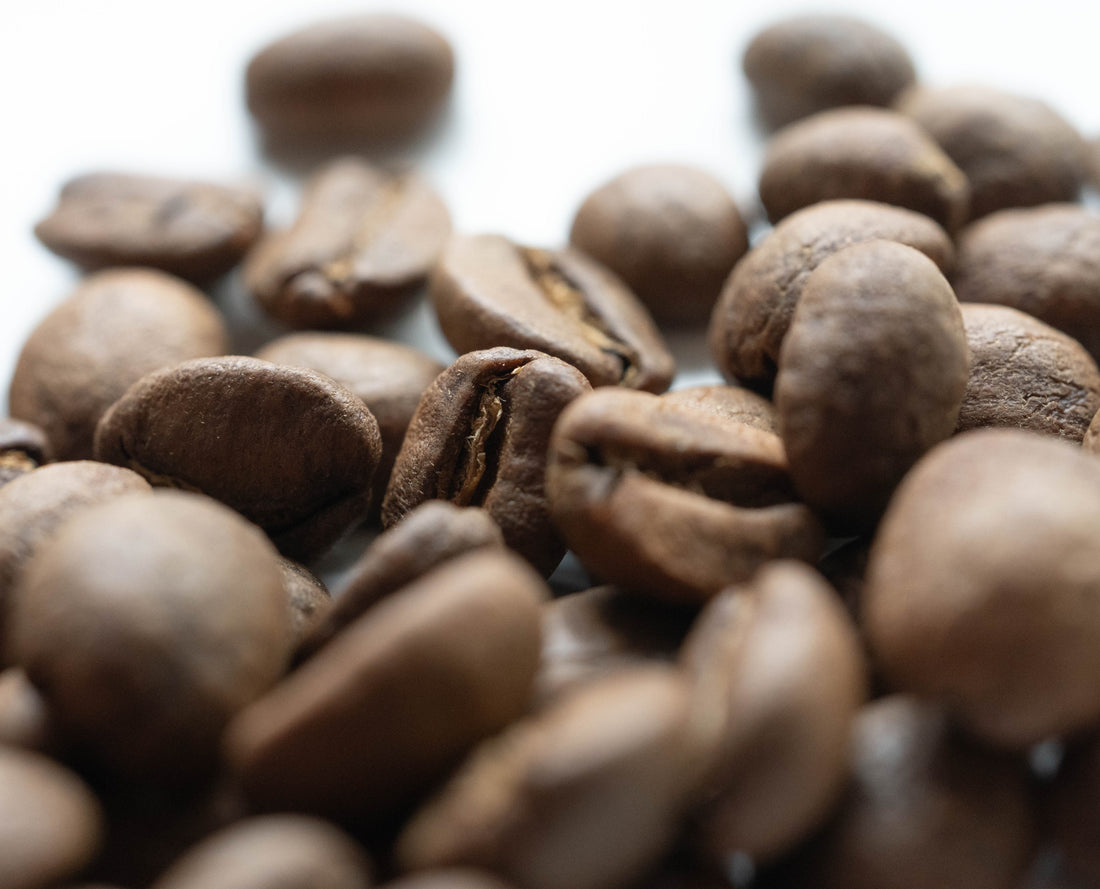
Anaerobic Coffee Processing - The Science Behind Flavours in Coffee
Share this article
Coffee processing has evolved dramatically over the past two decades, with anaerobic fermentation emerging as one of the most innovative and controversial methods in specialty coffee. Anaerobic Fermentation was borrowed from winemaking and refined by pioneering coffee producers to create distinct flavours in coffee, potentially boosting that coffees overall perceived taste and mouthfeel and increase it's sale price.
In this article we will cover what anaerobic coffee processing actually is, how it works and some of the science behind how it impacts coffee.
What Is Anaerobic Coffee Processing?
Anaerobic can be simplified into 'without air' when it comes to coffee Anaerobic processing involves fermenting coffee cherries or beans in sealed, oxygen-free environments.
Unlike traditional coffee processing methods where fermentation occurs in open air tanks with natural yeasts and bacteria coming into play, anaerobic processing is done in sealed containers, barrels, or specialised fermentation tanks where oxygen has been displaced by carbon dioxide.
This coffee fermentation process starts with freshly harvested coffee cherries being placed in airtight containers. The naturally occurring sugars in the cherry pulp and mucilage provide food for microorganisms, but without oxygen, fermentation follows a completely different biochemical pathway compared to conventional methods.

The Science of Oxygen-Free Fermentation
The absence of oxygen fundamentally changes how microorganisms break down the sugars and organic compounds in coffee cherries. In aerobic conditions, yeasts and bacteria metabolize sugars efficiently, producing carbon dioxide, water, and relatively simple byproducts. However, in anaerobic conditions, these same microorganisms must find alternative metabolic pathways.
During anaerobic fermentation, microorganisms produce a wider array of organic compounds, including various esters, aldehydes, and organic acids. These compounds form through slower, more complex biochemical processes.
Research has demonstrated that lactic acid bacteria, which thrive in low-oxygen environments, become more active and produce lactic acid along with other flavour active compounds that contribute to intensified flavours in coffee (Silva et al., 2024; Ferreira et al., 2023).
The fermentation temperature, PH levels, and duration all play crucial roles in determining the final flavour of the coffee. Studies have shown a significant effect between fermentation time and decreasing PH, as well as between fermentation time and increasing acidity (Romero et al., 2022).
Most anaerobic fermentations occur at controlled temperatures between 15-25°c and can last anywhere from 48 hours to several weeks, depending on the desired outcome and environmental conditions.
Microbial Communities and Flavour Development
The sealed environment of anaerobic fermentation creates unique microbial ecosystems. Without oxygen, aerobic bacteria that typically dominate traditional fermentation are suppressed, allowing anaerobic bacteria and yeasts to flourish.
Some studies (Batista et al., 2023) found higher prevalence of Enterobacteriaceae and certain fungi early in the process, but lactic acid bacteria and yeasts often remain active or even increase during the later stages, depending on the conditions.
Studies have demonstrated that anaerobic fermentation increases the production of certain volatile organic compounds, particularly fruity esters and floral aldehydes, with research showing that anaerobic fermentation increased the volatilization of coffee flavour substances (Wu et al., 2023). These compounds are responsible for the intense, wine-like characteristics often associated with anaerobic-processed coffees.
Scientific analysis has revealed that 2-furanmethanol, a volatile compound, was a major compound in all roasted coffees, with anaerobic fermentation maintaining high levels of bioactive and volatile compounds (Pavelková et al., 2023). The extended fermentation time also allows for more complete breakdown of chlorogenic acids, which can reduce perceived bitterness and create smoother, more complex flavour profiles.
Processing Variations and Techniques
Anaerobic processing isn't a single method but rather a family of techniques that share the common element of oxygen-free fermentation. Some producers ferment whole cherries, while others remove the pulp first and ferment the beans with mucilage still attached. The choice of container material, fermentation duration, and temperature control all influence the final product.
Some innovative producers have experimented with carbonic maceration, a technique adapted from winemaking where cherries are submerged in carbon dioxide. Research has shown that carbonic maceration affects the sensorial, chemical, and microbial profile of coffee, with studies demonstrating its potential for diversifying metabolic routes promoted by fermentation (Pinto et al., 2021). Others use controlled inoculation with specific yeast strains to achieve more predictable flavour outcomes, with research showing that specific yeasts like Torulospora delbrueckii and Candida parapsilosis can produce distinct aromas and flavours of citrus, caramel, honey, chocolate, and chestnut in anaerobic fermentation (Ferreira et al., 2023). These variations allow producers to create signature flavour profiles and differentiate their coffees in the competitive specialty market.

Impact on Coffee Flavour and Aroma
The most immediately noticeable effect of anaerobic processing is the dramatic shift in flavour profile. These coffees often highlight intense fruity characteristics, ranging from tropical fruits like pineapple and mango to stone fruits such as peach and apricot. Wine-like notes are common, with some coffees displaying characteristics reminiscent of red wine, port, or even champagne.
The fermentation process also affects the coffee's mouthfeel and perceived sweetness. The breakdown of complex carbohydrates during extended fermentation can create a syrupy, full-bodied texture that's distinctly different from traditionally processed coffees. Many anaerobic coffees also display enhanced perceived sweetness, even without added sugars, due to the formation of specific organic compounds during fermentation.
However, these intense flavours come with trade offs. The same compounds that create desirable fruity notes can, in excess, produce off-flavours described as overly alcoholic, vinegary, or unpleasantly fermented. The narrow window between desired complexity and undesirable over-fermentation requires precise control and extensive experience.
Challenges and Considerations
Anaerobic processing presents significant technical and quality control challenges. The sealed environment makes it difficult to monitor fermentation progress, and small variations in temperature, pH, or timing can dramatically affect the final product. The risk of contamination by undesirable microorganisms is also heightened in the oxygen-free environment.
From a sensory perspective, anaerobic coffees can be polarising. Coffee drinkers used to to more traditional flavour profiles like washed coffees may find these coffees overwhelming or unrecognisable as coffee. The intense, wine-like characteristics can mask the subtle terroir and varietal characteristics that many coffee enthusiasts prize.
Additionally, the extended fermentation times and specialised equipment required for anaerobic processing make it more expensive and labor-intensive than traditional methods. This economic reality means anaerobic coffees typically command premium prices, limiting their accessibility to specialty coffee markets.
The Future of Anaerobic Processing
As anaerobic processing continues to evolve, producers are refining their techniques to achieve more consistent and balanced results. Scientific understanding of the fermentation process is improving, allowing for better prediction and control of flavour outcomes. Research indicates there is a migration from the use of processes in open environments to closed environments with controlled anaerobic conditions (Oliveira et al., 2023). Some producers are experimenting with hybrid approaches that combine anaerobic and aerobic phases to capture the benefits of both methods.
The technique has also sparked broader innovation in coffee processing, encouraging experimentation with controlled fermentation, specific yeast inoculation, and other biotechnological approaches to flavour development. Studies have shown that fermentation contributes to the formation of precursor metabolites of volatile compounds, with different fermentation techniques affecting the synthesis of flavour precursor compounds (Silva et al., 2024). This scientific approach to processing represents a significant shift from traditional methods that relied primarily on environmental conditions and intuition.
Anaerobic Fermentation Conclusion
Anaerobic coffee processing represents a fascinating intersection of traditional agricultural knowledge and modern biotechnology. While the technique produces some of the most distinctive and complex coffees available, it also challenges conventional notions of what coffee should taste like. The science behind anaerobic fermentation reveals how small changes in processing conditions can dramatically alter the final product, demonstrating the remarkable potential for innovation in an ancient agricultural practice.
For coffee enthusiasts, anaerobic processed coffees offer an opportunity to experience flavours that push the boundaries of what's possible in coffee. Whether these intense, wine-like characteristics represent the future of specialty coffee or remain a niche curiosity depends largely on consumer acceptance and continued refinement of processing techniques. What's certain is that anaerobic processing has permanently expanded our understanding of coffee's flavour potential and the science behind its development.
Buy Anaerobic Fermented Coffee Beans
References
- Batista, N. N., Ramos, C. L., Dias, D. R., Pinheiro, A. C. M., & Schwan, R. F. (2023). Understanding the Effects of Self-Induced Anaerobic Fermentation on Coffee Beans Quality: Microbiological, Metabolic, and Sensory Studies. Foods, 12(1), 37.
https://www.mdpi.com/2304-8158/12/1/37 - Ferreira, S. S., et al. (2023). Influence of anaerobic fermentation and yeast inoculation on the viability, chemical composition, and quality of coffee. Current Research in Food Science, 6.
https://www.sciencedirect.com/science/article/abs/pii/S2212429222006782 - Oliveira, P. D., et al. (2023). Coffee fermentation process: A review. Food Research International, 165.
[Available through institutional access via ScienceDirect] - Pavelková, A., et al. (2023). Effect of method of processing specialty coffee beans (natural, washed, honey, fermentation, maceration) on bioactive and volatile compounds. Food Chemistry, 398.
https://www.sciencedirect.com/science/article/pii/S002364382201180X - Pinto, J. S., et al. (2021). Microbial fermentation affects sensorial, chemical, and microbial profile of coffee under carbonic maceration. Food Chemistry, 342.
[Available through institutional access via ScienceDirect] - Romero, G., et al. (2022). Volatile Compound Characterization of Coffee (Coffea arabica) Processed at Different Fermentation Times Using SPME–GC–MS. Foods, 11(6), 833.
[Available through MDPI - Foods journal] - Silva, C. F., et al. (2024). Coffee fermentation as a tool for quality improvement: an integrative review and bibliometric analysis. International Journal of Food Science & Technology, 59(2).
https://ifst.onlinelibrary.wiley.com/doi/10.1111/ijfs.17381 - Wu, J., et al. (2023). Characterization of the volatile flavour compounds in Yunnan Arabica coffee prepared by different primary processing methods using HS-SPME/GC-MS and HS-GC-IMS. Food Chemistry, 421.
[Available through institutional access via ScienceDirect]



